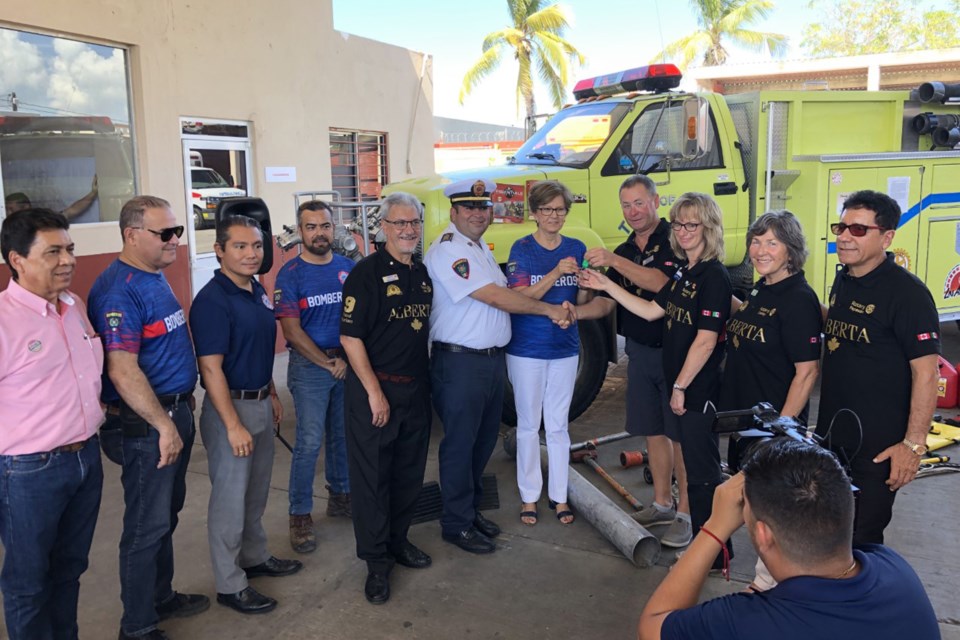OLDS - Equipment sent along with a fire truck from Olds helped save the lives of three people after being driven down to Mexico, a member of the Rotary Club of Olds says.
Mary Turner was among four members of the club who were involved when a 1993 fire truck, deemed surplus by the Olds Fire Department, Town of Olds and Mountain View County was turned over to authorities in Mazatlan, Mexico.
Fire Chief Justin Andrew says the fire department sent a hydraulic cutter-spreader combo unit and a hydraulic ram along with the truck. This equipment is similar to another tool known as the Jaws of Life.
"This tool saved three lives even before the official handover ceremony occurred. According to Fire Chief Edgar Peinado Beltran, (it) saved the lives of three people after immediately arriving in Mazatlan," Turner wrote.
"This shows the value of this equipment. It may no longer meet Canadian national fire codes, but it is saving lives and it has proven its worth to the Mexican people."
In total, six surplus emergency and service vehicles were driven down there starting in mid-October. The other five included another fire truck, two handi-buses, an ambulance and a school bus. All came from communities across the southern Alberta Rotary Club district, which extends from Ponoka south to the U.S. border.
It marked the second year in a row that several members of the Rotary Club of Olds have participated in a convoy of surplus vehicles driven to Mexico.
Club member Jim Crawford was one of the drivers of the Olds fire truck. Another club member, Barb Mciver, was scheduled to drive a handi-bus down there.
Turner and fellow Olds Rotarian Debby Crawford served as ambassadors. Their job was to formally present the vehicles to Mexican officials.
Turner said the journey lasted seven days, covering more than 4,000 kilometres. On average, the drivers — two per vehicle — drove for six to nine hours a day.
"Crossing two international borders took some time, especially when the cargo needed to be unloaded and reloaded, ensuring that everything was accounted for," she wrote.
"Travelling for this distance included some mechanical challenges including radiator hose, exhaust systems, and electrical and fuel issues," she added. "But with the resourceful team, these issues were resolved and the convoy proceeded to the destination in Mazatlan, Mexico."


